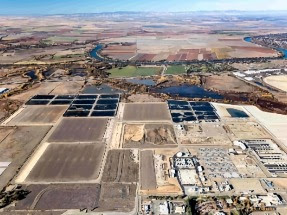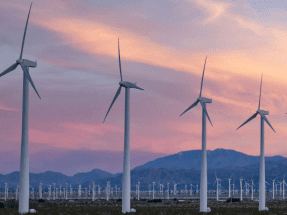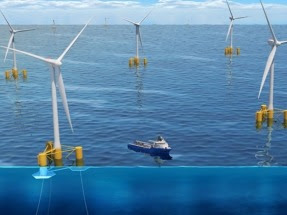WOBO recognises the research and developments taking place to maximise the capture of energy and the maximisation of natural resources.
Decarbonizing Steel Manufacturing Using Biomass
David Mazyck, professor and head of Penn State’s School of Engineering Design and Innovation (SEDI), and Daniel Whisler, associate professor of engineering design, were awarded a three-year, $1.33 million grant from the US Department of Energy to explore ways to decarbonize the steel and iron manufacturing industry.
The researchers will work to engineer solutions to replace the use of a high carbon material made from coal — called coke — with biomass, which is derived from organic components like plants and wood, in steel and iron manufacturing.
They also plan to develop a microcredential program geared toward steelworkers from underrepresented groups who need certification for advancement within the steel industry. The program will focus on topics such as sustainable manufacturing, bio-based fuel and eco-friendly engineering.

Ameresco Begins Construction of Biogas Cogeneration Project
Ameresco, Inc., announced it entered a nearly $140 million contract to develop and construct advanced technology biogas cogeneration facility for the Sacramento Area Sewer District located at the EchoWater Resource Recovery Facility near Elk Grove, California.
This on-site renewable energy facility will beneficially utilize biogas (methane), a byproduct of the EchoWater Facility’s solids treatment process, to produce renewable electricity and heat for the EchoWater Facility through an integrated 13.4 MW cogeneration plant that will utilize fuel cell and engine technology.
By incorporating the fuel cell system, the project will have exceptional efficiency and reduced pollutant emissions, making it a clean, reliable baseload dispatchable resource. Additionally, the system will allow for the expandability to produce hydrogen in the future.

Studying Bubbles Can Lead to More Efficient Biofuel Motors
By studying how bubbles form in a drop of biodiesel, researchers at the University of Gothenburg can help future engines get the most energy out of the fuel.
In an internal combustion engine, the fuel is distributed in small droplets in injection valves to maximize combustion.
In the engine, the fuel droplets are pressurized to turn into gas and burn. When gas is formed, bubbles form inside the droplets and it is these that the researchers at the University of Gothenburg have studied using femtosecond lasers.

RESMAN Energy Technology Selected to Participate in Geothermal Project
RESMAN Energy Technology’s tracer technology is being used in the groundbreaking Utah FORGE geothermal project. With expectations of a drastic market increase for Enhanced Geothermal Systems by 2030, the Utah FORGE project is poised to become an important test case for scaling geothermal technology globally. Located at Milford, Utah, 320 km (200 mi) from Salt Lake City, this international field laboratory is managed by the Energy & Geoscience Institute at the University of Utah and sponsored by the Department of Energy.

Wind Farms Can Offset Their Emissions Within Two Years, New Study Shows
After spinning for under two years, a wind farm can offset the carbon emissions generated across its entire 30-year lifespan, when compared to thermal power plants. That’s according to a new peer-reviewed study published in the Journal of the Royal Society of New Zealand – which also shows within six months a turbine can generate all the energy consumed across its lifecycle.

Winners of 2nd Phase of Wind Prize Bring Floating Offshore Wind Closer to Fruition
Floating offshore wind energy has huge energy potential—2.8 terawatts in the United States, to be exact. That is more than double current U.S. electricity consumption. The White House aims to begin tapping that potential with its current goal of deploying 15 gigawatts of floating offshore wind capacity by 2035.

Google Signs PPA for 60MW of Solar in Japan
Google has signed two solar power purchase agreements in Japan that bring the company closer to its goal to run on 24/7 carbon-free energy by 2030. These PPPAs with Itochu’s partner Clean Energy Connect and Shizen Energy are Google’s first in the country, and together they will add a combined 60 megawatts (MW) of new solar energy capacity to the Japanese grid.
Google’s PPA with Clean Energy Connect, a partner of Itochu Corporation, involves constructing a network of roughly 800 small-scale solar plants across multiple grid regions in Japan. This novel, distributed approach is a creative solution to the challenge of limited land availability for large-scale solar projects in the country. It will generate 40 MW of clean energy to support Google’s operations in Japan.
The PPA with Shizen Energy, a leading renewable energy company in Japan, focuses on the development of a 20 MW utility-scale solar project situated in the same power grid as our recently opened data center in Inzai City, Chiba prefecture.

New solar park in Spain provides renewable power to Velux Group
A large solar park developed for the Velux Group < to meet its renewable power needs in Europe is now fully operational and connected to the local electricity grid in Spain.
The 54 MWp-photovoltaic (PV) park integrates renewable electricity production, agriculture and biodiversity. It is the first Agri-PV solar park global renewable energy company BayWa re built in Spain, based on a Power Purchase Agreement (PPA) with Velux.
In November 2022, the Velux Group and BayWa re announced a PPA to develop two large solar PV parks in southern Spain: one in Gerena, close to Seville, and the other in Alhendín, near Granada. The Alhendín park was recently completed and is now delivering electricity to the local power grid.
With Alhendín fully operational, Velux has achieved its 100 percent renewable electricity goal, while enabling a new renewable energy plant in Europe. The park consists of more than 85,000 solar panels and produces 96.8 GWh of electricity annually, equivalent to the electricity consumption of 24,700 households.

